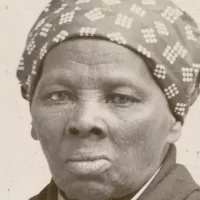HIV refers to two species of Lentivirus that infect humans and, if untreated, lead to Acquired Immunodeficiency Syndrome (AIDS). AIDS is characterized by the progressive failure of the immune system, increasing susceptibility to opportunistic infections and cancers. The average survival time after HIV infection without treatment ranges from 9 to 11 years, varying based on the HIV subtype.
1910: Estimated date of HIV-1 M group origin
Genetic studies of the virus suggest that the most recent common ancestor of the HIV-1 M group dates back to approximately 1910.
1928: Prostitution rate in Leopoldville
As of 1928, as many as 45% of female residents of eastern Leopoldville (currently Kinshasa) were thought to have been prostitutes.
1933: Syphilis infection rate in Leopoldville
As of 1933, around 15% of all residents of Leopoldville (currently Kinshasa) were infected by one of the forms of syphilis.
1959: Earliest documented case of HIV
In 1959, the earliest, well-documented case of HIV in a human was recorded in the Belgian Congo.
1966: Earliest retrospectively described case of AIDS
The earliest retrospectively described case of AIDS is believed to have been in Norway beginning in 1966.
1966: Possible presence of HIV in the United States
The virus may have been present in the United States as early as 1966, based on the case of Robert Rayford.
1969: Death of Robert Rayford
In 1969, Robert Rayford, a sixteen-year-old male, died after presenting with HIV related symptoms in 1966.
May 18, 1981: First news story on 'an exotic new disease'
On May 18, 1981, the first news story on "an exotic new disease" appeared in the gay newspaper New York Native.
1981: First clinical observation of AIDS
In 1981, AIDS was first clinically observed in the United States, with cases of Pneumocystis pneumonia and Kaposi's sarcoma emerging in injection drug users and gay men.
1981: Formation of CDC task force
In 1981, the U.S. Centers for Disease Control and Prevention (CDC) formed a task force to monitor the outbreak of what would later be known as AIDS.
July 1982: Introduction of AIDS as a name for the disease
In July 1982, the name AIDS was introduced at a meeting after terms like GRID and "the 4H disease" proved misleading.
September 1982: CDC starts using the name AIDS
By September 1982, the CDC started using the name AIDS to refer to the disease.
1983: Jay Levy discovers AIDS virus
In 1983, Jay A. Levy independently discovered the AIDS virus and named it the AIDS associated retrovirus (ARV).
1983: Discovery of a novel retrovirus
In 1983, two separate research groups led by Robert Gallo and Françoise Barré-Sinoussi and Luc Montagnier independently declared that a novel retrovirus may have been infecting AIDS patients.
1984: Gallo claims discovery of HTLV-III
In 1984, Gallo claimed that his group had isolated a virus, HTLV-III, from a person with AIDS.
1986: Renaming of LAV and HTLV-III to HIV
In 1986, the viruses LAV and HTLV-III were renamed HIV, as they turned out to be the same.
1987: Gallo admits error in virus discovery claim
In 1987, Gallo admitted that the virus he claimed to have discovered in 1984 was in reality a virus sent to him from France the year before.
2000: Global HIV-1 subtype prevalence analysis
In 2000, an analysis of global HIV-1 subtype prevalence showed that 47.2% of infections worldwide were of subtype C, 26.7% were of subtype A/CRF02_AG, 12.3% were of subtype B, 5.3% were of subtype D, 3.2% were of CRF_AE, and the remaining 5.3% were composed of other subtypes and CRFs.
2006: Isolation of gorilla SIV
In 2006, gorilla SIV (SIVgor) was first isolated from western lowland gorillas.
2008: The Swiss Statement
In 2008, the Swiss Federal Commission for AIDS/HIV first proposed the concept that HIV is not transmitted through sexual contact when an HIV-positive individual maintains a consistently undetectable viral load, also known as the Swiss Statement.
2009: Hypothesized existence of HIV-1 group 'P'
In 2009, the existence of a fourth group of HIV-1, "P", was hypothesized based on a virus isolated that year.
2020: HIV-1 and HIV-2 classification update
In 2020, both HIV-1 and HIV-2 were classified by the International Committee on Taxonomy of Viruses as belonging to the species "Lentivirus humimdef1" and "Lentivirus humimdef2" respectively.
Mentioned in this timeline
The United States of America is a federal republic located...
Africa is the second-largest and second-most populous continent comprising of...

News encompasses information about current events disseminated through various media...
France officially the French Republic is primarily located in Western...

Syphilis is a sexually transmitted infection caused by the bacterium...

September is the ninth month of the year in the...
Trending

Derwin James Jr is a professional football safety for the Los Angeles Chargers He played college football at Florida State...

12 days ago Kayce Dutton's Journey: 'Y: Marshals' Trailer Reveals New Beginnings After 'Yellowstone'

4 months ago Ketel Marte's Absence and Day Off Requests Cause Frustration Among Diamondbacks Teammates

27 days ago Stallone Protected Himself with Body Armor for Snipes' Intense 'Demolition Man' Performance.

6 months ago Pascal Siakam Shines in NBA Finals, Inspiring Africa and Sharing Lessons.

Dallas Goedert is an American football tight end currently playing for the Philadelphia Eagles in the NFL He was drafted...
Popular
Matt and Ross Duffer known as the Duffer Brothers are...
Aftyn Alyssa Behn is an American politician currently serving as...

Candace Owens is an American conservative political commentator and author...

Ilhan Omar is an American politician currently serving as the...

XXXTentacion born Jahseh Dwayne Ricardo Onfroy was a controversial yet...

Harriet Tubman was a pivotal American abolitionist and social activist...